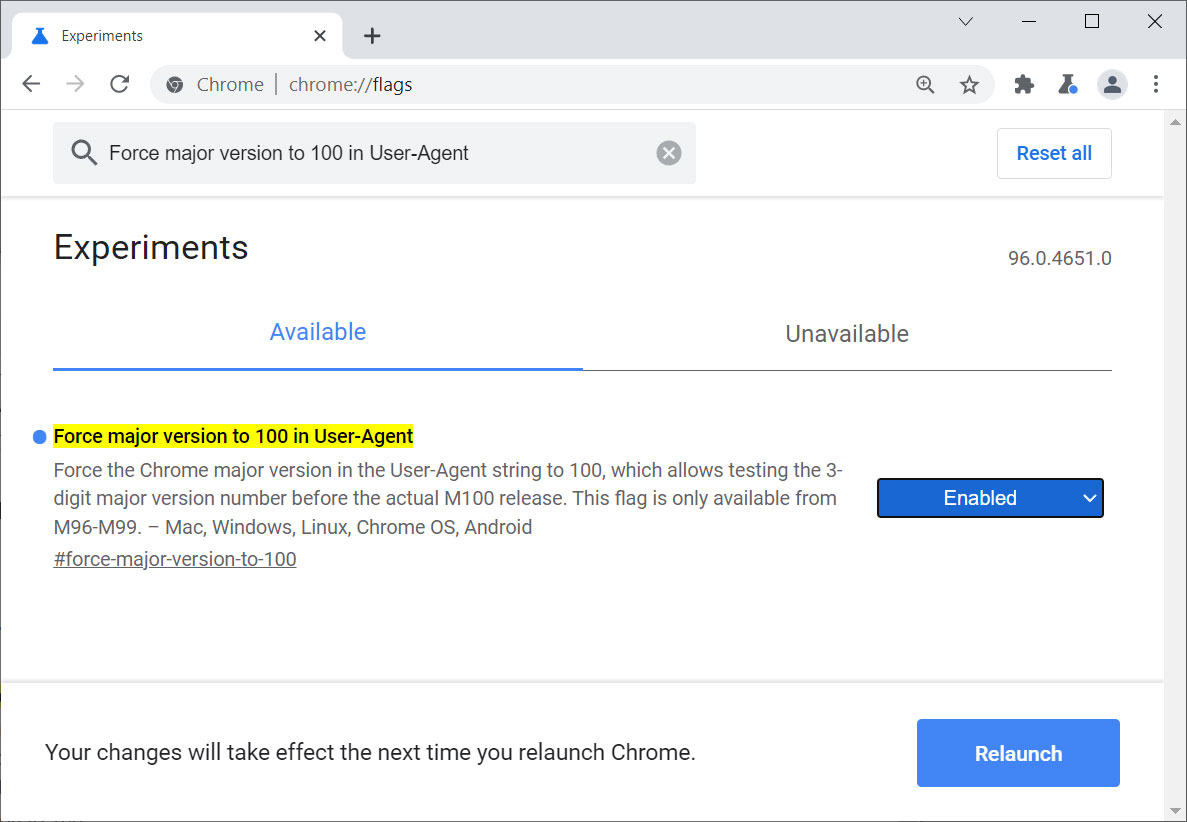





Google is testing whether changing the Chrome user agent to three-digit ‘Chrome/100’ will cause loss of functionality on websites that are expecting a two digit version number.
A user agent is a string sent by a web browser to a website to let the site know what browser the visitor is using, its version, and integrated technology.
When a new version of a browser, such as Google Chrome, is released, the developers will increment the version number in a user agent string.
For example, the user agent for Google Chrome version 93 is:
Mozilla/5.0 (Windows NT 10.0; Win64; x64) AppleWebKit/537.36 (KHTML, like Gecko) Chrome/93.0.4577.82 Safari/537.36While for the current version, Chrome 94, it is:
"Mozilla/5.0 (Windows NT 10.0; Win64; x64) AppleWebKit/537.36 (KHTML, like Gecko) Chrome/94.0.4606.54 Safari/537.36As you can see, the Chrome version number in the user agent string is incremented to match the browser’s version number.
Also Read: New Licensing Requirements For Cyber-Security Service Providers in 2022
By sending the browser user agent to a website, it allows site developers to change a site or app’s functionality to accommodate various browser quirks, features, and abilities.
As Google Chrome version numbers are currently two digits, Chrome engineers are investigating whether any site, or its functionality, breaks when Chrome 100 is released in March 2022.
“To avoid any UA string breakage when Chrome ships v100, we should add a flag to chrome://flags which flips the current major version to 100 in the User-Agent string as well as navigator.userAgent,” Google Chrome engineer Mike Taylor explains in a bug post first spotted by Techdows.
When conducting the test, Chrome users will have their user agent changed to the following string with the hopes that if anything breaks, they will report it to Google.
Mozilla/5.0 (Windows NT 10.0; Win64; x64) AppleWebKit/537.36 (KHTML, like Gecko) Chrome/100.0.4651.0 Safari/537.36A similar test was conducted by Mozilla in August 2021 where the Firefox user agent was changed to “Firefox/100.0” user agent.
For the most part, there have not been too many issues, with only a few sites stating the browser is unsupported or problems with the functionality of the site.
Slack’s web interface also showed some problems with popup menu buttons, but was quickly fixed by the Slack developers.
Also Read: A Closer Look: The Personal Information Protection Law in China
To test the Google Chrome 100 user agent on your own sites or sites you visit, you can enable this test using the following steps:
 Adding the general.useragent.override setting
Adding the general.useragent.override settingNow that this setting is enabled, when you visit web page it will send a user agent indicating that the browser is Chrome 100.
To change Chrome’s user agent back to its default, simply follow this process and change the flag’s setting to Default and relaunch the browser again.